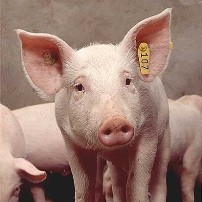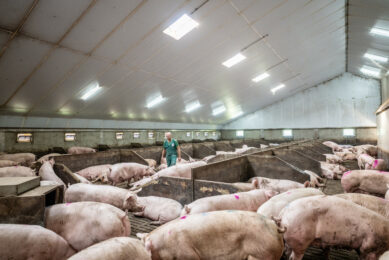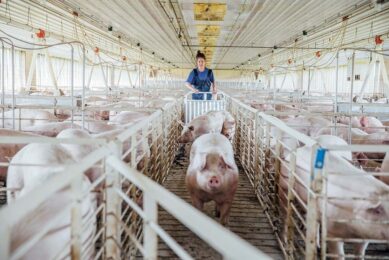Pigs play a role with Hepatitis E spread

Pigs play a role in the exposure process of humans to Hepatitis E virus (HEV), a Dutch scientist has shown recently.
Martijn Bouwknegt, who will receive a PhD for his research at Wageningen University and Research Centre in the Netherlands, did his research at the Centre for Infectious Disease Control Netherlands (CIb), part of the National Institute for Public Health and the Environment (RIVM).
Reproduction
Bouwknegt’s research shows that the virus reproduces easily among pigs. Once one pig has been infected, others will follow shortly. The virus replicates in pigs and will be excreted through faeces and urine. In addition, the virus’ genetic material has been traced in several organs and pig muscle tissues. In most cases, the pigs did not have any clinical signs of disease.
Two routes of exposure have been researched for humans to HEV from pigs: pig liver consumption and direct contact with pigs. The research showed that 6.5% of the researched livers from shops contained HEV genetic material.
Research to antibodies in veterinarians and a representative number of members of the public showed that among the vets working intensively with pigs was the highest percentage of infected people (11%). Infections among vets working less frequently on pigs amounted to 6%; members of the public showed an infection percentage of 2%.
Virus spreading
It remains unclear as to how the virus spreading works in the Dutch pig population. A large genetic variation of HEV on various farms could point into two directions: the virus remains on-farm for a long time or there are more than one external sources. Since HEV exists in animals in the wild as well, virus exchange probably occurs between contaminated populations.
Bouwknegt said that it is of major importance to prevent HEV from entering any farm, since the virus replicates easily. Hygiene measures and vaccination would be potential tools.
Deer and wild boar
What exactly could be the role of pigs in comparison to other animals in which HEV has been found, like deer and wild boar, still needs to be researched, just like the extent to which people can get ill. The infection does not seem to lead to disease in most cases.
On a yearly basis, the RIVM traces on average ten patients having caught the infection in the Netherlands.
Related websites:
• Wageningen University and Research Centre (WUR)
• RIVM











